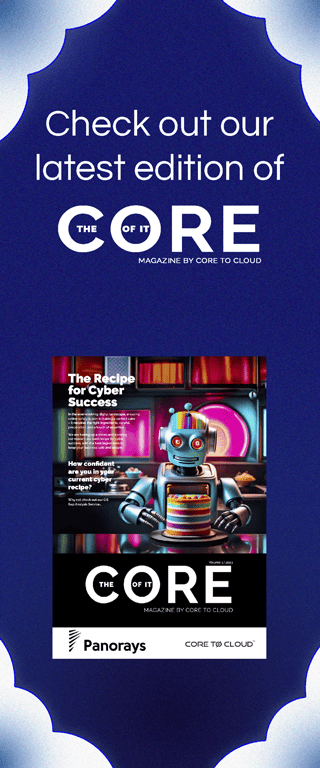Are you stressed?
We think that with everything that is going on now “yes” is a totally normal response to this question. Stress and mental health are often overlooked within our sector, with many people assuming it is just part of the job. We want to bring this to your attention and encourage you to make changes to support yourself and your tech teams.
The state of (stress) play
It isn’t a secret that the tech or IT sector harnesses stress within its roles traditionally. The health status of this industry needs to be improved and a spotlight needs to be shone on the issues this sector faces.
According to a 2019 report from BIMA, individuals employed in the tech industry are remarkably five times more prone to depression than the overall population, based on data gathered from over 3000 members of the UK technology community. Yes, you read that right but also half of them, specifically 52%, have undergone anxiety or depression at some point. On top of those devastating statistics additionally, 66% of the respondents disclosed being stressed by their work, which is comparable to levels observed in the healthcare sector.
These numbers are incredibly high, within this, there Is also 45% of the same group that feel there is minimal or not enough emphasis on mental health support or resources within their company.
Technostress refers to the stress that arises from the use of computers, as described by Padma (2015). This type of stress can pose a considerable challenge to the health of employees, according to Prathyusha (2019). Workers in the information technology (IT) sector may be particularly vulnerable to stress-related illnesses, such as alcoholism, diabetes, asthma, irritable bowel syndrome (IBS), high blood pressure, and digestive disorders, as outlined by Padma et al. (2015). Not only is there a need to support individuals within this sector at the initial signs of mental health decline, but also to recognise these situations before they turn into physical issues such as high blood pressure.
How Covid-19 increased tech-stress
We apologise for talking about this again… but it is incredibly relevant to the issue of mental health within the tech industry. The sudden upturn of our world during the pandemic led to intense pressure being laid on certain sectors such as healthcare and IT. According to Forbes, 77% of tech leaders have work-related stress due to the impacts of Covid, this is linked to a huge increase in workload that over 86% of tech leaders experienced during this time.
What are the main reasons for this increased pressure?
- Increase in working from home
Hybrid teams and the necessity for individuals to now work from home put immense pressure on IT teams and our sector. This meant that there were long hours, a higher expectancy for output, and a need for IT teams to pivot quickly and ensure solutions were put in place so businesses could continue to function. - Increase in the number and complexity of threats
The use of new cloud solutions and off-site connectivity created the opportunity for new threats within IT landscapes. According to Comparitech in 2020, 16 million COVID-related threats were acknowledged. Most of these were email threats and phishing attempts. This was a huge spike, adding more and more pressure on the IT sector and internal tech/IT teams. - Increase of individuals using services
Everyone suddenly had a need for new IT solutions and support. From freelancers to large corporations, the need to be able to continue while not in an office or workplace was integral to the continuance of these businesses. Nobody was really prepared for something of this nature, and IT providers and internal IT teams were the first to be questioned regarding options and solutions.
Looking through these three areas it is obvious why the IT sector needs support regarding mental health. This sector needs to have better options for tech providers to ensure that they can elevate out of these impacts. We need to make a difference.
How to fight back against tech stress
After seeing the data, you must notice the importance of us all making a united effort to make a difference in our sector. The change we want to see starts with us and also starts with those who feel this way advocating for a better solution.
Here are some ways we can support our internal tech teams.
- We need to ensure that we are treating mental health in the same way we recognise physical health issues. There needs to be more recognition of mental health and the stereotypes surrounding this need to be broken down.
- Within all organisations, there need to be clear communication channels that allow individuals who are feeling stressed or have mental health decline to know whom they should speak to and what resources are immediately available. This no longer needs to be a “nice to have”, it should be a sector standard.
- Training and support need to be offered not only to individuals but also those who work directly with tech teams. The more we understand mental health the easier it is to recognise signs and trends, so we can support those within our tech teams to prioritise their mental health.
- We need to be clear on what we expect… What we mean here is that we need to ensure that our tech team knows what is expected and has the opportunity to ensure that their labour load isn’t too much. A systematic review by Maudgalya et al, (2006) explored whether there is any relationship between burnout and working in an IT profession. They identified three key exposures: role ambiguity, role conflict, and job tasks.
We all need to recognise the importance of mental health within tech sectors and IT, and the change starts with us and the organisations that we work within.
At Core to Cloud we aim to make positive changes within our sector, and one of the ways we do that is by creating newsletters that keep you up to date with everything cyber security, tech and what we are up to. If you want to make sure you don’t miss out, you can sign up for the one that resonates with you here:















